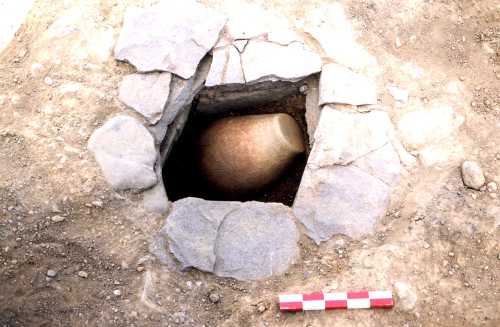
I recently came across an interesting 19th century account describing the discovery of a Bronze Age cist burial at Mullaun, Co. Wexford. Written by George Henry Kinahan, a geologist with the Geological Survey, it gives a valuable insight into the folklore and superstitions surrounding these early archaeological discoveries.
His description reads:
‘Here some years ago three men, while removing a ditch, came upon a kistvaen (cist), and left it intending to open it at midnight, but when they returned at midnight the howling wind in the trees frightened them away. Afterwards, when it was opened, an urn within was found. The common belief in all this country is, that if the urn is opened at the proper moment, which is generally considered to be midnight, it will contain gold; but at any other time the gold will melt to ashes. When this is supposed to have happened, the urn is nearly always smashed. Some recommend that before you see the urn you should partially raise the top stone, and with your hand slip into the urn half a sovereign, as gold makes gold grow. If you find a treasure you must kill a cat, as otherwise it will bring you ill luck’.
References
Kinanhan, G.H. 1879-82. ‘Miscellanea, Bronze Age urn and cist at Ballyhale, Gorey’ in JRSAI. 80, 155-157.
Image courtesy of Know Thy Place and Rubicon Archaeology



2 thoughts on “Treasure into ashes: A 19th century cist burial discovery”